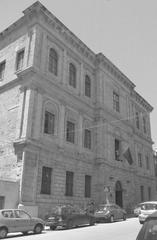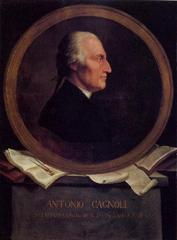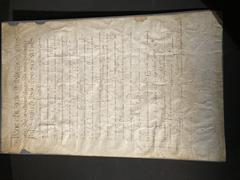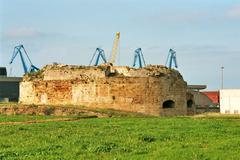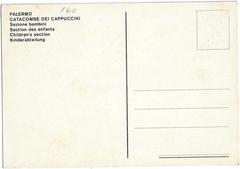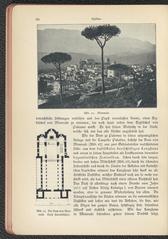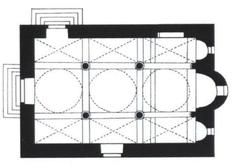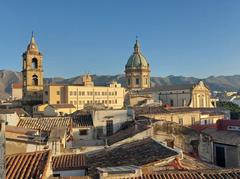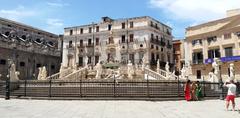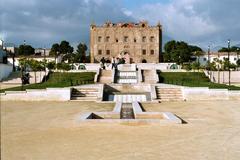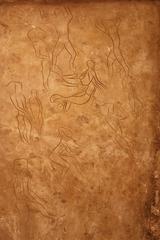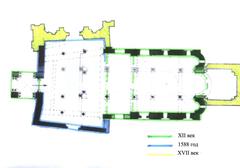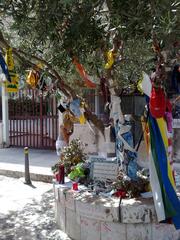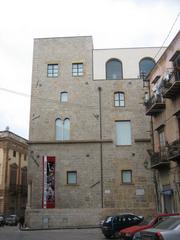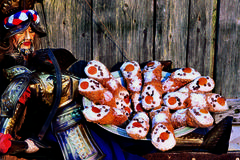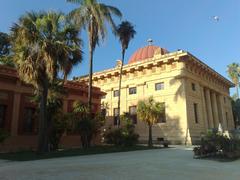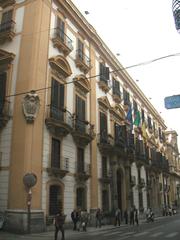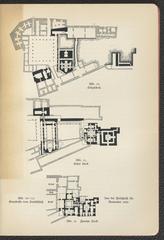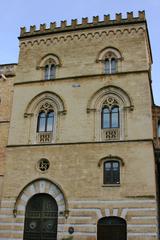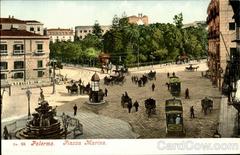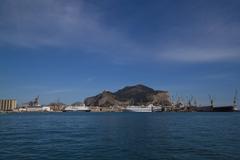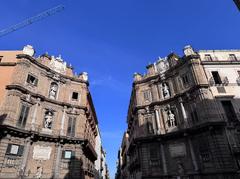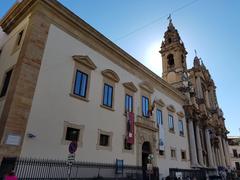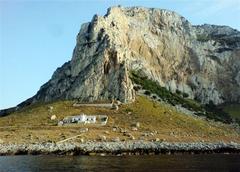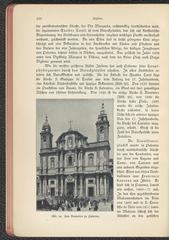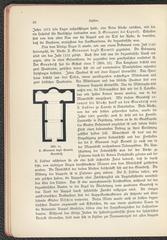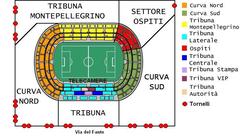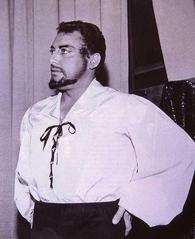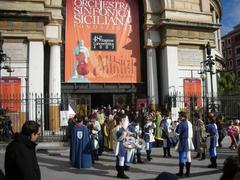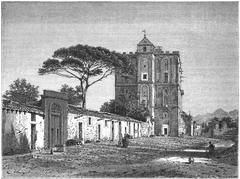Sicilian Ethnographic Museum Giuseppe Pitrè: Comprehensive Visitor Guide
Date: 04/07/2025
Introduction
The Sicilian Ethnographic Museum Giuseppe Pitrè in Palermo stands as a vital guardian of Sicily’s multifaceted cultural heritage. Founded in 1909 by the celebrated physician and folklorist Giuseppe Pitrè (1841–1916), the museum preserves and showcases the traditions, customs, and material culture that define the island’s unique identity. Through its extensive collections, immersive exhibits, and dedication to education and research, the museum offers visitors a rich journey into the heart of Sicilian life from the 17th through the 20th centuries. This guide provides everything you need to plan your visit—including historical background, practical information, highlights of the collections, accessibility, and expert tips—making it an indispensable resource for travelers, culture lovers, and researchers alike.
(palermoviva.it, museopitre.comune.palermo.it, artsupp.com)
Table of Contents
- Historical Background
- Museum Locations and Setting
- Collections and Thematic Exhibits
- Academic and Educational Resources
- Visitor Information
- Frequently Asked Questions (FAQ)
- Conclusion and Final Tips
- References and Further Reading
Historical Background
Giuseppe Pitrè: Founder and Visionary
Giuseppe Pitrè was a trailblazer in the field of Italian ethnology and anthropology. His enduring legacy includes the monumental “Biblioteca delle tradizioni popolari siciliane,” a 25-volume compendium of Sicilian folklore and traditions. Pitrè’s pioneering approach was holistic, integrating material artifacts with oral histories, music, and folklore to capture both tangible and intangible aspects of Sicilian culture. Recognizing the urgent need to document disappearing rural traditions in the face of modernization, Pitrè collected thousands of artifacts and oral testimonies, traveling extensively across Sicily. His vision established the museum as a center for both preservation and scholarly research.
(ilfattodipalermo.it, nomadit.co.uk)
Institutional Growth and Influence
The museum’s origins trace back to the Mostra Etnografica Siciliana at the 1891–92 Grande Esposizione Nazionale di Palermo, where Pitrè’s initial collections were first displayed. After its formal establishment in 1909, the museum quickly became a reference point for ethnographic studies. Under the stewardship of Giuseppe Cocchiara and subsequent directors, the museum expanded its collections and influence, developing innovative approaches to museography and ethnographic research.
(palermoviva.it, museopitre.comune.palermo.it)
Museum Locations and Setting
Dual Locations: Parco della Favorita & Palazzo Tarallo
The Museo Etnografico Giuseppe Pitrè operates from two principal sites in Palermo:
-
Parco della Favorita / Palazzina Cinese (Viale Duca degli Abruzzi, 1): The main site, nestled in Palermo’s largest urban park, houses the core collections in a setting rich with history and tranquility. The annexes were once part of the Bourbon royal estate, adding a regal backdrop to the exhibits.
-
Palazzo Tarallo (Via delle Pergole): Located in the historic Albergheria district, this secondary venue hosts special exhibits, the puppet theater, and research archives. It offers a more intimate exploration of specific Sicilian traditions.
Both sites are accessible by public transport, and visitors are encouraged to check the official website for current opening hours and exhibition schedules, as these may vary between locations.
(artsupp.com, visitsicily.info)
Collections and Thematic Exhibits
Overview
With around 4,000 artifacts, the museum’s exhibitions are organized into thematic sections that chronicle the evolution of Sicilian folk life. The displays reflect Sicily’s role as a Mediterranean crossroads, shaped by Arab, Norman, Spanish, and other influences.
(enjoysicilia.it, magna-sicilia.com)
Key Thematic Sections
- Traditional Costumes and Textiles: Showcases male and female attire, such as bridal dresses from Piana degli Albanesi (Albanian minority) and everyday peasant clothing. Accessories include ornate shawls and jewelry.
- Domestic Life and Furnishings: Features furniture, kitchenware, handwoven linens, and reconstructions of Sicilian home interiors, from peasant cottages to bourgeois dwellings.
- Agriculture and Pastoralism: Tools, carts, grape presses, and olive oil mills illustrate rural work and seasonal cycles.
- Religious and Festive Traditions: Ex-votos, nativity figures (notably by Giovanni Matera), processional statues, and festival banners document faith and community life.
- Opera dei Pupi (Sicilian Puppet Theater): A renowned collection of marionettes, stage sets, and playbills brings this UNESCO-recognized art form to life.
- Sicilian Carts (Carretti Siciliani): Elaborately painted carts, a symbol of Sicilian folk art, are among the museum’s most iconic exhibits.
- Musical Instruments: Includes tambourines, bagpipes, and jaw harps, complemented by audio recordings of traditional songs.
- Toys, Games, and Childhood: Handmade toys, school materials, and games from the late 19th and early 20th centuries reflect the creativity of Sicilian children.
- Culinary Traditions: Kitchen tools, bread stamps, and molds used for iconic Sicilian sweets, with explanations of culinary customs and influences.
- Manuscripts, Photographs, and Oral Histories: Archival materials document the process of collecting Sicilian traditions, with thousands of photographs and audio recordings.
(museopitre.comune.palermo.it, artsupp.com, everything.explained.today)
Notable Artifacts
- 19th-century bridal gowns with intricate lacework
- Complete marionette sets from the Orlando Furioso cycle
- Hand-painted Sicilian carts from Catania
- Early 20th-century grape press
- Collections of ex-votos depicting miracles and maritime rescues
Academic and Educational Resources
The museum’s library, with over 30,000 volumes, is a resource for scholars interested in Sicilian culture, folklore, and ethnography. The archive includes unpublished manuscripts and 7,000 letters exchanged between Pitrè and international scholars. The museum frequently collaborates with local artisans, hosts workshops, and organizes events to ensure its collections remain a living part of Palermo’s cultural landscape.
(everything.explained.today, museopitre.comune.palermo.it, lasiciliainrete.it)
Visitor Information
Locations & Access
- Main Site: Parco della Favorita, Viale Duca degli Abruzzi, 1, Palermo
- Secondary Site: Palazzo Tarallo, Via delle Pergole, Palermo
Opening Hours
- Main Site: Tuesday to Sunday, 9:00 AM – 6:30 PM (last admission 5:45 PM); Closed Mondays
- Palazzo Tarallo: Open by appointment; check official channels for updates
Tickets and Admission
- General admission: €5–€8 (verify current rates)
- Reduced: €3–€5 (EU citizens 18–25)
- Free: Children under 18, Palermo residents, and certain eligible categories
- Tickets available on-site or via the official museum website
Accessibility
- Parco della Favorita site: Wheelchair accessible, with ramps and adapted facilities
- Palazzo Tarallo: Limited accessibility due to historic architecture; contact the museum in advance
Guided Tours & Educational Activities
- Guided tours available in Italian, English, and French by prior booking
- Audio guides for self-guided visits
- Workshops and temporary exhibitions are held regularly
Getting There
- Public Transport: Bus lines 101, 102, and 105 from Palermo city center
- Parking: Limited; public transport recommended
Facilities
- Restrooms, small bookshop/gift shop (main site)
- Family-friendly spaces and educational workshops for children
Photography
- Non-flash photography generally permitted except in some special exhibitions
Frequently Asked Questions (FAQ)
Q: What are the museum’s visiting hours?
A: Main site: Tuesday to Sunday, 9:00 AM – 6:30 PM. Closed Mondays. Palazzo Tarallo: by appointment.
Q: How do I buy tickets?
A: Purchase at the museum or online via the official site.
Q: Are guided tours available?
A: Yes, in multiple languages by prior booking. Audio guides are also available.
Q: Is the museum wheelchair accessible?
A: The main site is accessible; Palazzo Tarallo has limited access.
Q: Can I take photos?
A: Yes, without flash, except where otherwise indicated.
Q: How much time should I allow for a visit?
A: Allocate at least 1.5–2 hours to explore the collections.
Conclusion and Final Tips
The Museo Etnografico Giuseppe Pitrè is an essential stop for anyone seeking to understand Sicily’s vibrant history and living traditions. Its diverse collections, dynamic events, and educational resources make it a highlight among Palermo’s historical sites. Whether exploring traditional costumes, marionettes, or Sicilian carts, visitors will find a wealth of stories that illuminate the island’s enduring spirit.
For updated details on hours, tickets, and events, consult the official museum website or follow their social media channels. Enhance your experience with the Audiala app for interactive guides and exclusive content.
References and Further Reading
- Museo Etnografico Giuseppe Pitrè in Palermo: History, Collections, Visiting Hours & Tips, 2025
- Sicilian Ethnographic Museum Giuseppe Pitrè: A Visitor’s Guide to History, Culture, and Heritage in Palermo, 2025
- Sicilian Ethnographic Museum Giuseppe Pitrè: Visiting Information, Exhibits, and Cultural Significance in Palermo, 2025
- Visiting the Sicilian Ethnographic Museum Giuseppe Pitrè: Hours, Tickets, and Must-See Exhibits in Palermo, 2025
- The history of Sicilian puppets, discovering the ancient tradition of puppetry, Magna Sicilia, 2022
- In Sicilia questo museo è pieno di misteri, ecco dove si trova e quali segreti nasconde, Il Fatto di Palermo, 2025
- NomadIT Conference Paper on Giuseppe Pitrè, 2024
- Enjoy Sicilia - Museo Etnografico Pitrè Palermo
- La Sicilia in Rete - Museo Etnografico Giuseppe Pitrè
- Everything Explained Today: Museo Etnografico Siciliano Giuseppe Pitrè
- Visit Sicily Guide
